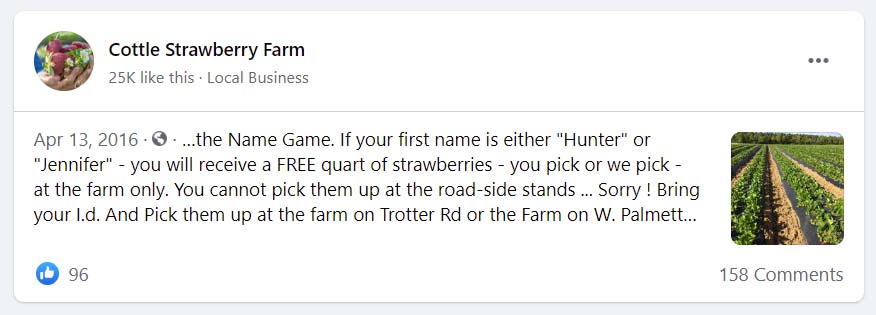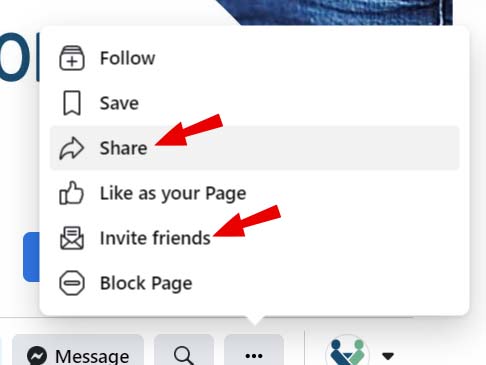Marketing is an important part of any business. Whether you're selling products on Amazon, Etsy, eBay, or through your brick and mortar location, you need to know how to market your business effectively.
If you’re a small business owner or are launching a startup, it can be hard to know where to start. You may not have the resources to bring on a marketing team or even a consultant. Having started three small businesses myself, I know that, in the beginning, you find yourself doing lots of different things daily.
We'll teach you everything you need to know in order to market your small business online successfully. Here are ten things you can do starting now:
Create or Update Your Website.
If you want to sell something online, you first need to set up a website. You can use WordPress, Wix, Google, or other platforms to build and maintain your own site. These days, you have almost unlimited options as a small business owner. Most of them don’t require you to have any knowledge of HTML or coding; they are drag-and-drop applications.
If You Already Have a Website, Update it
Even if you have a website already, it’s worth doing a new audit and evaluation. The web is constantly changing and user experience is becoming more important, seemingly by the day. Try looking at your website through the eyes of a potential customer, and ask yourself a few questions:
- Is the site visually appealing?
- Does the homepage capture my attention?
- Is it intuitive and easy to navigate?
- Can I find the resources I am looking for?
If you can answer these questions through the eyes of a viewer, you’ll understand how to update your site to be an effective marketing tool.
Build a Blog
A blog is one of the easiest ways to promote your product online. It's also free, so there's no reason not to start writing today.
And a blog is not just a place for written articles to live. You can include video, audio, infographics, and other content types in your library. Your focus should be on providing fresh content that your visitors will find interesting and useful. If you do that, you’ll begin to see growth.
Video vs. Text in Your Blog

Not everyone likes to be on video, and you may feel like it’s not for you. That’s okay. But keep in mind, creating a short, 2 or 3 minute video can be much faster than researching and writing a blog post.
Video also happens to be something consumers like. And, it can be both easy and free to make. You simply don’t need a set or professional lighting. Just use your smartphone to create a 60 second clip explaining one of your products and its benefits. Put these videos on your website and social media pages and you’re marketing your business through video.
Start Social Media Marketing.
If you're looking to build a brand online, social media marketing is a must. You need to make sure that you're using the right platforms, though. Facebook and Twitter are two of the biggest players out there, but other sites like Instagram and Tik-Tok are popular as well.
Each social media platform has its advantages and disadvantages, and each is different. The audiences they attract are different too. If your target audience is females between the ages of 25 and 39, for example, you might consider focusing on Instagram and Facebook.
To be most effective in your social media marketing, find out where your audience is, what its interests are, and meet them there. Sprout Social has a nice way of quickly seeing which social channels may be right for your business.
Any time you post new content in your blog, you can post it on social media too. Doing this will help you reach far more people. On average, you should consider posting at least 3 times per week, even if the posts are simple updates about what’s new or exciting in your business.
Ask for Reviews

When you consider buying a product on Amazon, you probably scroll through the reviews. If it’s a bigger purchase, you may read them carefully, and they can affect your decision to buy. We have gotten to a place where we expect to see reviews to help us make buying choices.
Yet, you almost certainly don’t know these people. Instead, you (and me) are putting a lot of faith in a few sentences written by someone we know nothing about, and that includes their mood at the time of writing.
But the point is we read them. Your prospective customers will too.
How to Ask For Reviews
Asking customers to provide feedback on your product or service and the experience they had with your business is perfectly okay. There are lots of ways you can do this, like sending an email after purchase, providing comment cards, or having a form on your website. Here are some things to keep in mind when you ask for reviews:
Offer anonymity
Some people won’t feel comfortable using their first and last names or who they work for. Give them the option of just using a first name and last initial.
Be transparent
Don’t try, even inadvertently, to influence what people write. Make it clear that they are free to express their opinion even if it’s negative.
Keep it short and simple
A review is not the same as a survey. Your review forms should be a place people can write a few sentences about their experience and be done, fast. Don’t lead them through a series of questions about their purchase. Instead, make it fast and painless.
Once you’ve collected some reviews, put them on your site and post them to your social media pages. In time, you’ll be able to encourage people to leave reviews directly on Google, Facebook, and other places.
Promote Your Products or Services.
Give people a reason to visit your website by rewarding them with coupons or other benefits. When visitors are in the research part of the consumer buying process, it’s nearly certain they are considering alternatives.
Social media marketing is one of the easiest ways to promote your products or services. It's also one of the most effective methods because people tend to trust recommendations from friends and family more than ads. You can offer in-store discounts using social posts, and if you have an eCommerce site you can offer codes to use at checkout.
Cottle Strawberry Farm in South Carolina does a great job of using social media to promote their berries during the season. In the past they have picked a name and assigned a day to it, like, “If your first name is Jennifer, come by today to get a free pint of strawberries.” This keeps their audience involved, interested, and waiting for new posts.

Notice the number of likes and comments. This is a good indicator that they are having success.
People feel good when they find a good deal, and they often want to share that with their friends. When that happens, they are doing your marketing for you.
Give Something Away
Giving a first-time visitor something is a good way to create engagement, be memorable, and encourage them to spend more time on your website. And, it really doesn’t matter what kind of business you are in - you have something to give, even if you don’t realize it.
If you have physical products that you sell in store or ship to customers, you can give new visitors a discount, usually as a percentage off your regular price. Or, you might offer a buy one get one (BOGO) option.
Service-based businesses can offer something too. This could be a free consultation, a trial membership, free course, or eBook download. The key is to offer something that has real value for the recipient.
Should You Require an Email Address?
Lots of these giveaways come with the condition that the visitor has to provide an email address in exchange for the free item. People are used to this, but in recent years they are more hesitant to give you their email address right away. Some companies are making the email opt-in optional, or no longer asking for it at all. They believe the goodwill giving something away with no strings attached is more valuable than a one-time email capture.
Grow Your Email List.
If yours is a service-based company, your email list may be one of your most valuable assets. Product-based companies are not far behind. Email marketing is a highly effective way to communicate and build relationships with your prospects and customers alike.

Depending on your company’s personality, you may choose to send several emails each week or just one or two a month. Whatever strategy is right for you, it’s important to keep your subscribers engaged.
How to Grow Your Email List
Growing your email list starts with your website. Many sites you visit will show you a form, often in the shape of a popup, which asks for your email address in exchange for a percentage off your first purchase. Others may simply ask you to subscribe to their newsletter (which is no longer really effective), or offer you something, like a PDF download.
Whatever mix you choose, make sure you’re providing value. Ask this simple question: How valuable is a prospect’s email address to me? Your answer can help you determine what to offer in exchange.
Share Your Story
You have friends. Telling them about your business is not out-of-bounds. Most social media platforms make this really easy. Facebook, for example, gives you a button right on your business page to do just that.

Your friends will be happy to know what you’re doing, as long as you don’t present your story in a way that seems salesy. And consider, if just one or two people share your post, you’ve expanded your reach tremendously.
Get on Google My Business
If your business has a physical address, you should be listed on Google My Business. Better still, you have the opportunity to manage your listing by adding photos, office hours, and more.
Being listed here is a great, and often overlooked, way to reach local prospects and customers. To visualize how it can drive traffic to your website and your office (if you want), open Google and type in something like “oil change near me”. The results you see are Google My Business listings.

Adding the “near me” phrase to the end of a search has become so common that Google will suggest it as you type in the search bar. And these days, people buying locally still tend to do online research before heading out to the store.
Build a Marketing Strategy
You can make all the plans in the world, but if you don’t write them down the chances are good you won’t execute them well. Creating a marketing strategy is a good exercise for several reasons:
- It causes you to think about your business from a different perspective
- It helps you determine your goals and objectives
- It makes your marketing ideas real and actionable.
My advice, particularly if you are just starting out, is to pick two or three from the list above and develop a written plan to execute them. Once you have started, you can come back and add more to it. Before you know it, you’ll be marketing your business in ways that get results.
Don’t know where to start? Download a free marketing strategy template here.
Wrapping Up
There are lots of ways you can market your small business or startup online. Many of them are free or require just a small investment. Getting started can feel difficult, but taking the time to write down your plan and populate your calendar are big steps in the right direction.
Just don’t feel like you have to do everything at once. It doesn’t hurt to start small. Doing so will give you an opportunity to see what’s working and what needs adjusting. As you grow you can add new things to your marketing mix and get more accurate in reaching your target audience.
As you try the marketing techniques on this list, you’ll find your business and your reach begin to grow.

